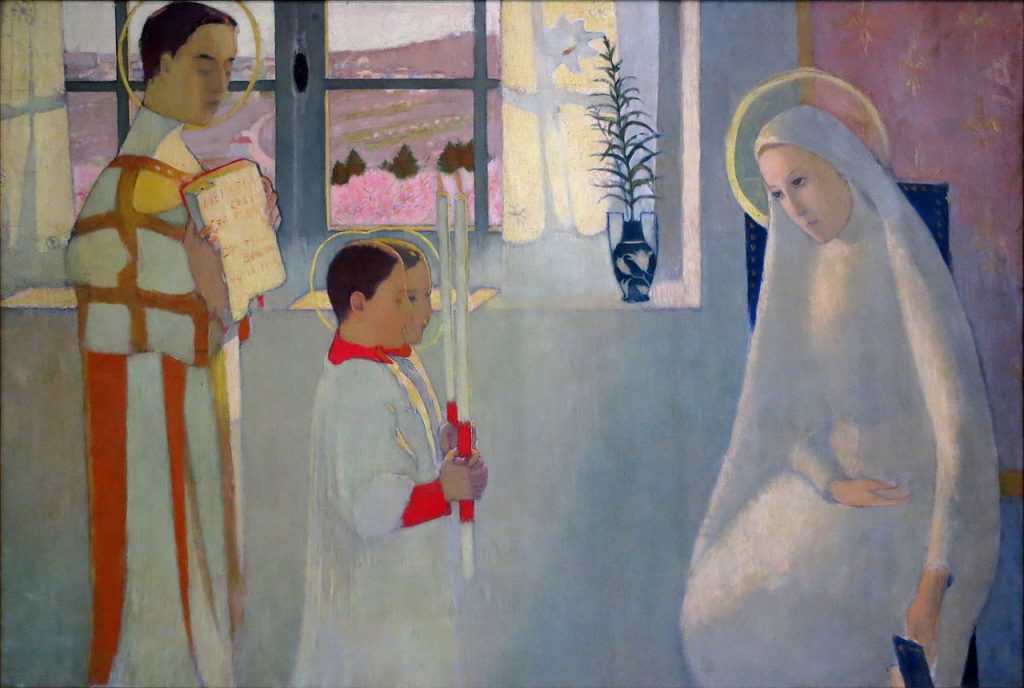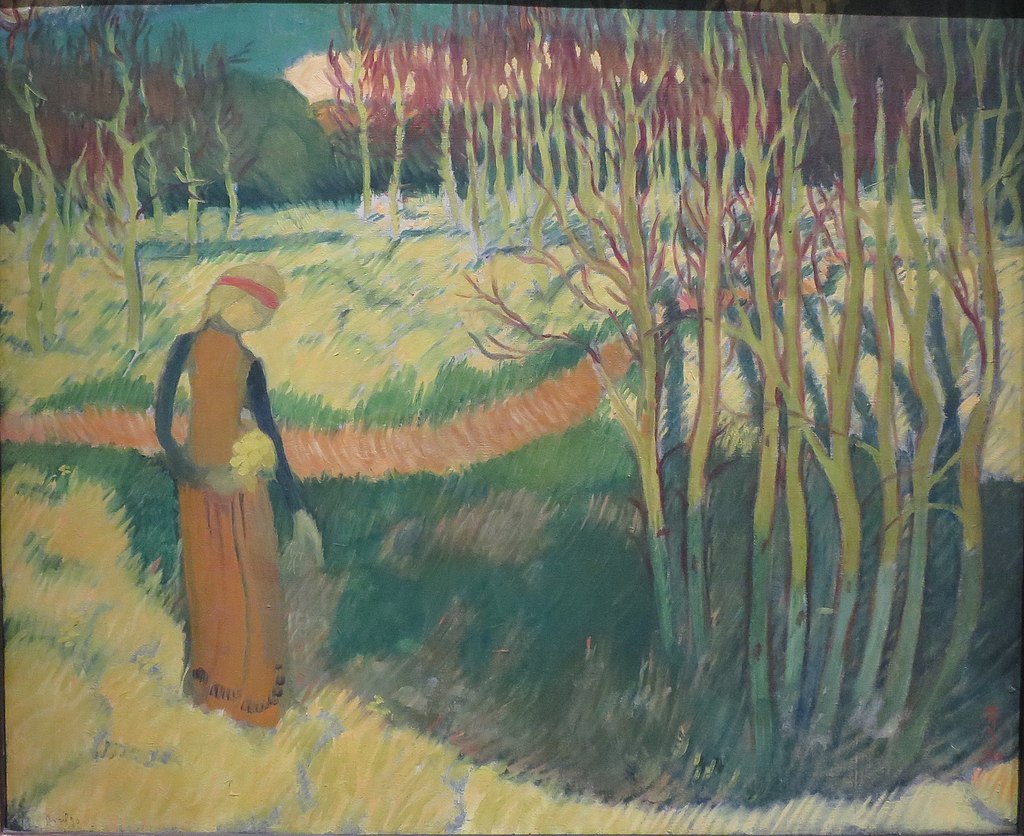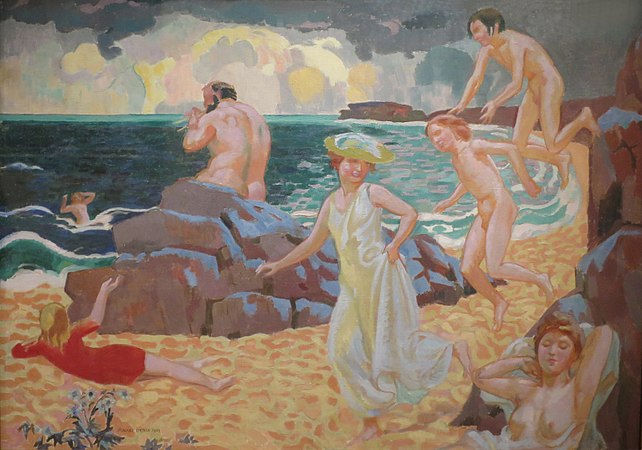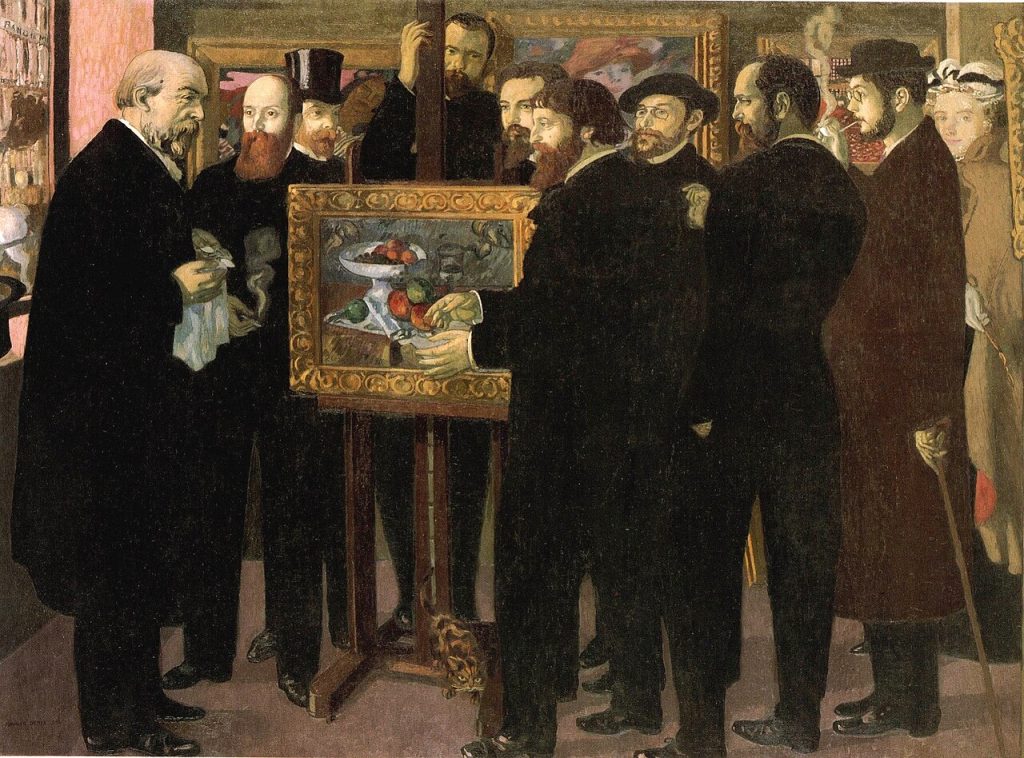Maurice Denis (1870–1943) was a prominent painter and member of the Symbolist and Les Nabis movements in France. Denis showed an early interest in the arts and started to study at the Académie Julian in Paris, and he got to know other artists who would eventually form the Nabis gathering which influenced generations of artists. Denis is counted as one of the major figures in the transitional period between impressionism and modern art.
The Nabis, which translates to “prophets” in Hebrew, was an emerging cluster of artists who strived to create a renewed visual vocabulary that transcended the time’s naturalism. Their goal was to convey the symbolic and spiritual aspects of art and in Denis’s later theories, he emphasised the significance of spirituality in artistic articulation. Maurice Denis was an important patron of the growth of Nabis’s ideas and notions, that make his art surplus of symbolism.

Denis was renowned for his love of imaginary and religious subjects, as well as for symbolising those religious beliefs via the use of vibrant colours and ornate patterns; his artwork frequently had a sense of rhythm and harmony. Denis, who created his art under the influence of Paul Gauguin, rebelled against the realistic trends of Impressionism and maintained the belief that art should be accessible to a wider audience. He also believed that ornamental art should be integrated into the works of artists.
Maurice Denis was not just a painter but also a passionate writer and art critic who wrote a great deal on art theory and emphasised the role that spirituality has in artistic expression.
Religious Vacation into Art
Denis believed that religion and the arts were connected, thus the only thing he changed was the viewpoint on religious art using a technique never seen in Western art before. Denis began to reject his parents’ religious beliefs and developed his visual spirituality using symbolism and unconventional artistic methods.

Denis had a close and lasting relationship with religion, and this spiritual aspect had a significant impact on both his writing and his artwork: being a devoted Catholic, his faith deeply influenced the way he saw the world and the art world. Denis thought that spirituality and transcendence should be communicated through art to awaken the divine in the observer.
Denis repeatedly portrayed mythological and religious topics, he believed that the mysteries of life, religion, and the divine might be expressed by art. Biblical figures, saints, angels, and other religious themes were commonplace in his works; he aimed to bring a sense of harmony, beauty, and spiritual significance through his artwork.
Maurice Denis was an artist and a prolific writer on spirituality and art; he explained his views in several treatises and writings. “Remember that a painting before it is a combat horse, a nude model, or some tale, is fundamentally a flat surface covered with colours combined in a precise order,” is one of his most well-known quotes.
Denis’s emphasis on the formal aspects of painting and his belief that the main obligation of an artist is to arrange colours and figures harmoniously are both reflected in this quotation. His more encyclopedic philosophy, however, proposed that this formal harmony was only a means to a greater plan, namely the information of transcendental and spiritual truths.
Due to his devotion to religious music and his desire to give art a deeper significance, Denis stands out as an influential figure in the centre of spirituality and art during this time. Denis’s perspective on religion and art was part of a larger movement in the late 19th and early 20th centuries that sought to restore a spiritual connection between art and religion in response to the materialism and industrialization of the day.
Maurice Denis’s homage to Cezanne
Paul Cézanne was one of the pioneers of Post-Impressionism, and Maurice Denis honoured him in several ways; along with other painters, Cézanne had a significant effect on Denis, specifically in composition, form, and colour treatment. As a member of the Nabis group, Denis belonged to a generation of painters who wanted to experiment with new mediums and approaches to artistic expression to go beyond the Impressionist movement.

Denis was impressed by Cézanne’s use of structure and shape, which diverged from Impressionism’s more impromptu and transient qualities. Cézanne’s focus on geometric shapes, especially in his still life and landscape paintings, aligned with Denis’s desire to produce art that was more symbolic and ordered.
One of Maurice Denis’s most well-known tributes to the artist is “Homage to Cézanne” (1900), in which Denis acknowledges the influence of Cézanne on contemporary painting. With its depictions of writers, musicians, and artists who were affected by Cézanne, the composition serves as a symbolic representation of the era’s art scene while also illustrating the impact Cézanne had on the artistic community and embracing his pivotal role in the development of art.
By paying homage to Cézanne, Denis realised the significance of his formal and structural breakthroughs and his role in defying academic art standards. The evolution of modern art in the late 19th and early 20th centuries was aided by Cézanne’s influence on Denis and other Nabis artists.
A beginner’s guide to Impressionism; How ‘Impressions’ Change the Art





